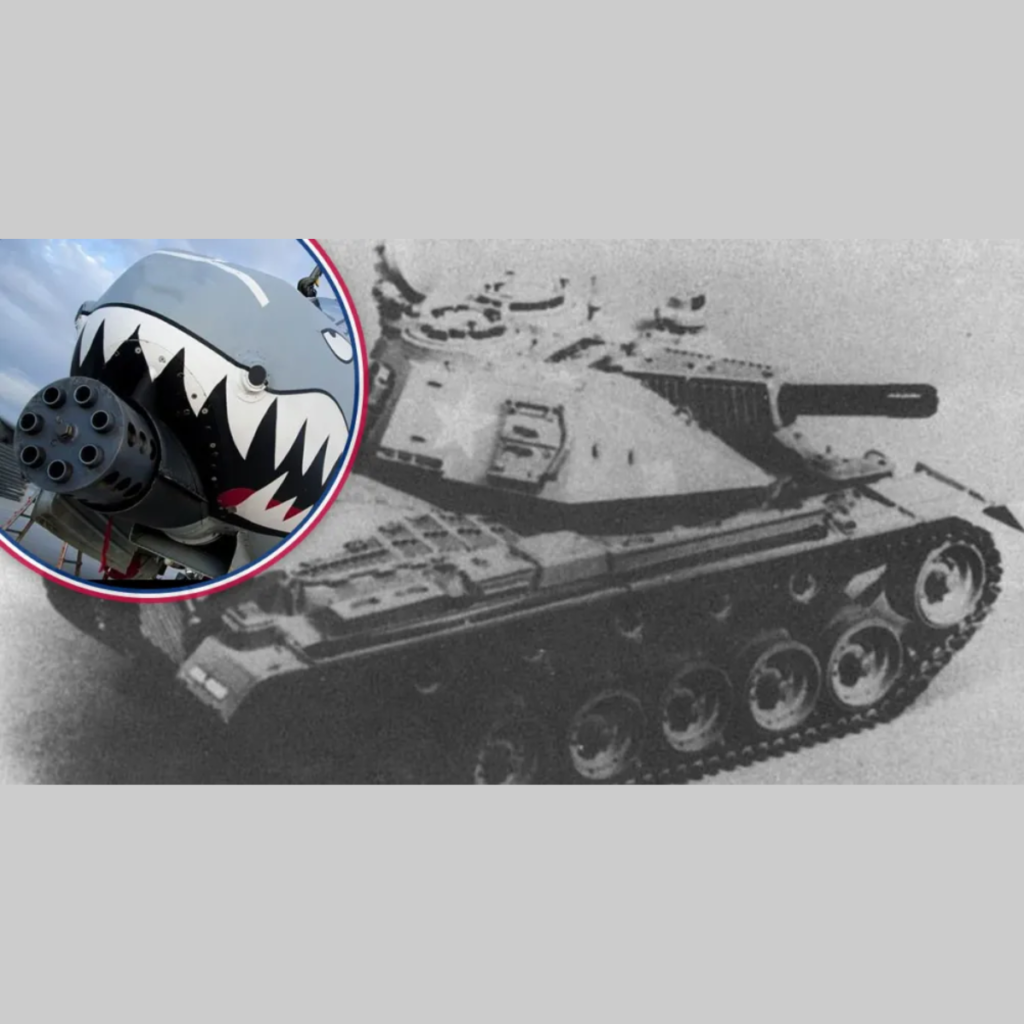
The A-10 Thunderbolt II, popularly known as the Warthog, was originally designed as a “tank-killer”. In fact, the entire aircraft was essentially built around a 30 mm rotary cannon, known as the GAU-8 Avenger, a fearsome name for a gun capable of spitting out depleted uranium shells the size of soda bottles designed to shred heavy Soviet tanks and armored personnel carriers into metal confetti.
While the Avenger’s primary use has been as the A-10’s main weapon, seeing combat action from the Persian Gulf War onward, the U.S. Army once considered making this cannon its own by mounting it on the very thing it was created to destroy: tanks.

In the late 1970s, the U.S. Army began looking to replace their aging force of self-propelled anti-aircraft guns with newer, more effective systems that could do a similar job with even more lethality and effectiveness than ever before. The result of this search for new air defense artillery would be fielded alongside the Army’s newest and fighting vehicles — namely the M1 Abrams main battle tank and the M2 Bradley infantry fighting vehicle, as part of the service’s vision for the future.
A competition under the Division Air Defense name was thus created.
The goal of the DIVAD program was to design, build and field a self-propelled air defense gun system, able to engage and shoot down low-flying enemy aircraft with controlled bursts of shells from a cannon mounted on a turret. The system would be manned by a small crew, aided by a radar tracking system that would pick up targets and “slave” the gun to them before firing. In concept, the DIVAD vehicle could go anywhere, dig in and wait for enemy aircraft to appear, then shoot them down quickly.
One of the various participants in the competition, according to Jane’s Weapon Systems 1988-1989, was General Electric, fresh from designing the GAU-8 Avenger for what would be the Air Force’s next air support attack jet – the A-10 Warthog. General Electric had the bright idea to take a modified version of the Avenger and place it in a turret, configured to hold its weight while moving the cannon around quickly to track and hit new targets as they appeared.

The turret, in turn, would be mated to the chassis of an M48 Patton main battle tank as per program requirements, giving it mobility. Able to spit out shells at a rate of 3900 rounds per minute at an effective range of 4000 feet, the Avenger would’ve been a major threat to the safety of any aircraft in the vicinity, sighted through its radar.
However, General Electric’s entry, referred to as the Air Defense Turret, didn’t advance during the DIVAD program. Instead, Ford and General Dynamics were given prototype production contracts to build their designs for testing, with Ford ultimately winning the competition. Known as the M247 Sergeant York, Ford’s anti-aircraft gun system was much more conventional, significantly lighter and apparently somewhat cheaper to build than the Avenger cannon concept.
However, it under-performed severely, much to the embarrassment of its parent company and the Army.
The DIVAD program soon proved to be an abject failure, with nothing to show for pouring millions into the project and the Sergeant York prototypes. The M247 couldn’t adequately track target drones with its radars, even when the drones were made to hover nearly stationary.
In 1985, Secretary of Defense Caspar Weinberger finally put the program out of its misery, noting that missiles were the future of air defense.
The Avenger cannon nevertheless does serve in a somewhat similar role today, functioning as the core of the Goalkeeper Close-In Weapon System, found on a number of modern warships around the world. Goalkeeper is designed to engage surface-skimming missiles aimed at naval vessels and obliterate them by putting up a “wall of steel” – essentially a massive scattered burst of shells which will hopefully strike and detonate the missile a safe distance away from the ship.
Still, one can’t help but wonder just how incredibly awesome mounting a 30mm Gatling cannon to a tank could have been, had the Army chosen to pursue General Electric’s idea instead of Ford’s.